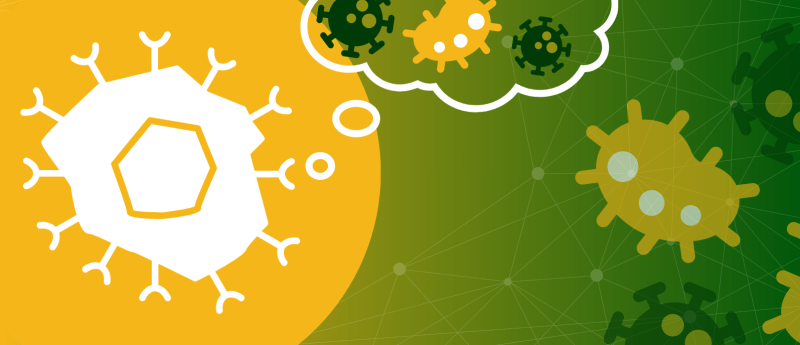The making of a memory T cell

Original story from the University of Massachusetts Amherst (MA, USA).
Pre-wired ability in ‘resting’ T cells to remember past viral foes discovered, a promising breakthrough for targeted cancer therapies.
A team of immunologists at the University of Massachusetts Amherst (MA, USA) has turned what we know about T cells, one of the most important parts of the body’s immune system, on its head, opening the door to next-generation cancer vaccines.
The research describes a novel and unusual mechanism for T cells to remember the pathogens and cancers that they had previously encountered. This immunological memory is crucial to the body’s immune response and forms the basis of how vaccines work; boosting cellular memory to recognize tumors could help improve cancer therapies.
Our bodies have different types of T cells, which are white blood cells. One type is CD8 T cells, which specialize in fighting both viral pathogens – think of the common cold – and altered cells of the organism itself, like cancerous tumor cells. Most of the time, the CD8 T cells are ‘naïve’ – mustered out of active duty and resting. But when they recognize foreign antigens after bumping into them, they suddenly wake up, turn into killer CD8 T cells and attack whatever the pathogen may be, from the sniffles to cancer. After the killer T cells have won their battle, most of them die.
“But,” interjected Leonid Pobezinsky, associate professor of veterinary and animal sciences at UMass Amherst and the paper’s senior author, “somehow a few CD8 T cells survive, transform into memory cells and form an elite task force called the ‘memory pool’ – they remember what that particular antigen looked like, so that they can be on the lookout for the next time it invades the body.”
It is these CD8 memory T cells that play critical roles in long-term immune protection and are central to tumor immunotherapies, because they are already primed to go into battle against specific pathogenic invaders. “They are fast to recognize a problem,” explained Pobezinsky, “stronger to fight, and already know how to kill the specific threat. They don’t need to be trained.”
 Easy as ABC: polymer increases chemotherapeutic payload
Easy as ABC: polymer increases chemotherapeutic payload
Bottlebrush-shaped polymer chains can deliver hundreds of prodrug molecules directly to tumors, rather than the handful currently possible with antibody–drug conjugates (ADCs).
Immunological dogma has long held that naïve T cells were ‘undecided’, meaning that it wasn’t until they were exposed to a pathogen that they began the process of transforming into the killer T cells that would die or the ones that would wind up as memory cells, preserving the record of the invading pathogen for the future.
But what if this process could be sped up?
“What we found,” shared Adam Lynch, a graduate student in Pobezinsky’s lab and the paper’s lead author, “runs counter to the long-held belief. There is a small population of naïve T cells that always turn into memory cells. They are pre-wired to do so.”
Pobezinsky adds that this small population is likely not involved in the direct immune response itself, but serve more as a library, preserving the memory of past pathogens and how to fight them for the future.
Even more exciting, these pre-wired memory cells have stem-cell-like properties, meaning that they easily can turn into other types of T cells involved in the immune response, especially when exposed to the current bath of cutting-edge immunotherapies. The researchers say we could potentially train these cells to recognize specific types of cancer long before those cancers appear in a person’s body.
“Our breakthrough was the result of interdisciplinary collaboration,” commented Pobezinsky.
First, Dominique Alfandari, professor of developmental biology at UMass Amherst and one of the paper’s co-authors, developed the antibodies with which to track and analyze immune cells, which allowed the team to uncover that not all T cells are undecided.
Next, Pobezinsky and his colleagues collaborated with their UMass Amherst colleague, Wei Cui, among whose specialties is developing mouse models at UMass’s Amherst Institute for Applied Life Sciences, on generating a model known as Dapl1ZsGreen – which indeed confirmed that these pre-wired memory cells do exist in the wild. At least in mice.
“We haven’t yet discovered these cells in humans,” Pobezinsky concluded. “But once we do, we may be able to make them, train them against specific cancers, and use them as the basis for targeted immunotherapies that would let our own body’s immune system identify and destroy cancerous tumors.”
This article has been republished from the following materials. Material may have been edited for length and house style. For further information, please contact the cited source. Our press release publishing policy can be accessed here.